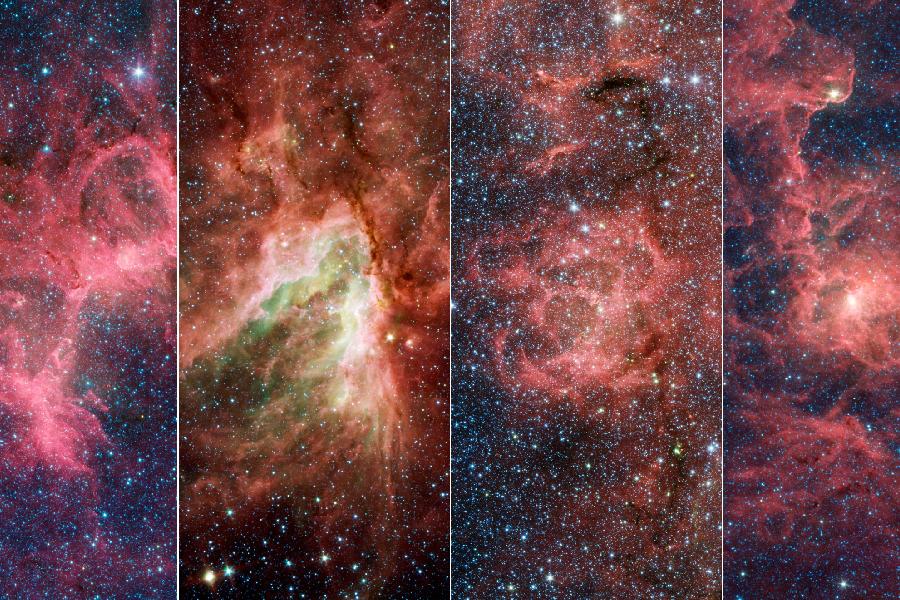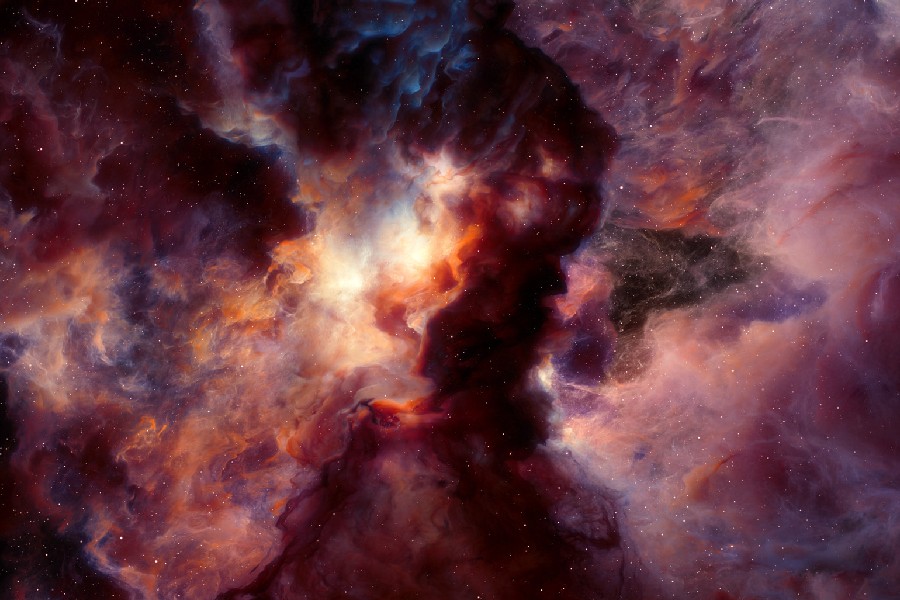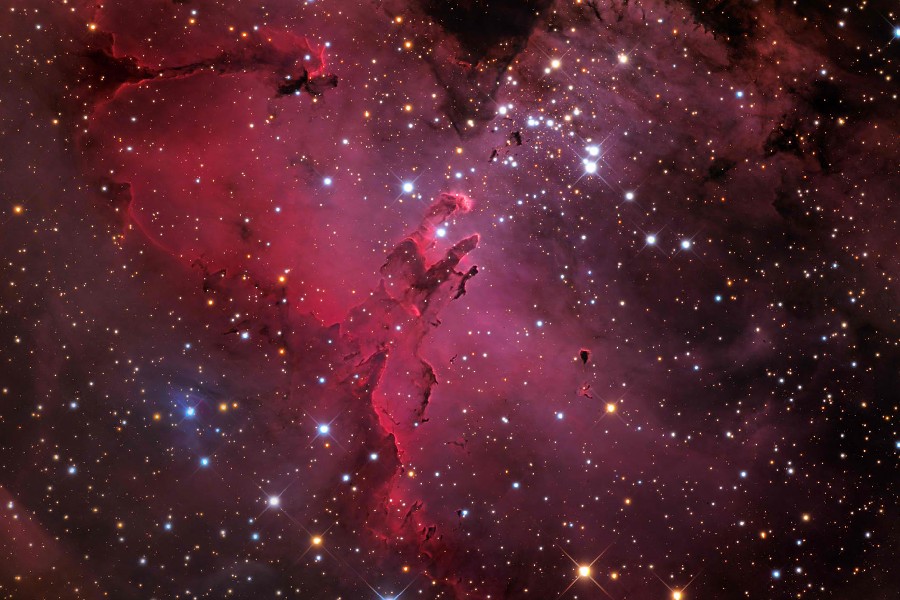Nebulae, those cosmic clouds of interstellar gas and dust, enrapture us with their ethereal shapes glowing across our galaxy. But did you know these stellar nurseries appear in various forms and features? How many types of nebulae are there?
In this article, we’ll discuss several key nebula varieties that astronomy has revealed through telescopes aimed at the heavens. We’ll also encounter luminous clouds housing newly forming stars, expanded shells where stars ended lives, and even mist left drifting from stellar clashes.
So, let’s explore some prominent examples, from embers illuminating gaseous explosions to vast turbulence swirling!

Types of Nebulae
Major nebula types include emission nebulae, supernova remnants, and planetary nebulae. Emission nebulae are clouds of ionized hydrogen gas illuminated by forming stars within.
Supernova remnants are another variety – expanding shells of matter blasted outward by exploded massive stars. And planetary nebulae constitute a third major type – glowing shrouds of gas/dust expelled from dying stars.
These three primary classifications exemplify different stellar evolutionary stages. They exhibit birth, explosive death, and pre-burnout phases through distinct signatures painted across our galaxy.
Their brilliant overlapping shapes propagate cosmic materials, driving renewal amidst an interwoven system linking star lifecycles. By elucidating stellar transitions, these key nebula varieties – emission, supernova, planetary – unveil the interconnected story of our universe told through vibrant interstellar structures.
Dark Nebulae
Dark nebulae are dense interstellar dust and gas clouds blocking visible light from traveling through them. They appear as dark, black patches in the night sky, obscuring the stars behind them. Unlike brighter emission or reflection nebulae, dark nebulae do not emit detectable visible spectrum light or reflect it, shrouding the luminous stars forming within.
Importance in astrophysics and cosmic studies
As stellar nurseries full of newly-forming stars and potential planets, unveiling these shrouded regions allows scientists key insights. So, observations through infrared and radio waves allow them to gain insights into the beginnings of star birth and galactic ecology by peering into these opaque clouds.
Additionally, potential prebiotic chemicals and complicated, frozen chemistry can be found in their frigid innards, just above absolute zero.
Visible Light and Dark Nebulae
Opaque dark nebulae profoundly interact with and disrupt visible light radiated from stars behind them. The dust and gas within these nebulae are composed of materials like hydrogen. They scatter and absorb visible-spectrum photons, blocking the starlight from reaching Earth.
Furthermore, visible waves cannot transmit through the nebulae’s dense interior that obscures forming stellar nurseries. Plus, the constituent gas and dust particles interrupt visible beams, capturing their energy and momentum internally within the dark clouds.
Hence, myriad particulate interactions veil the nebulae in darkness relative to surrounding space. They interrupt all visible radiation until other wavelengths reveal their contents.
Role in obscuring stars and celestial objects
- Apparent voids – From our planet’s perspective across cosmic distances, dark nebulae feature apparent black voids against brighter backdrops where notable stars may otherwise shine.
- Shrouded stellar nurseries – Within the nebular clouds, stellar illumination is present but absorbed by enveloping gasses, so it fails emission beyond the nebula boundaries. These stellar birthplace cocoons shield new star formation from view in visible wavelengths.

Interstellar Clouds and Dust Clouds
Interstellar clouds refer to accumulations of gas and dust distributed through the space between star systems within a galaxy. Interstellar cloud concentrations vary in size, density, and composition, allowing gasses like hydrogen to clump, collapse, and incubate new generations of stars.
Dark nebulae constitute a specific variety of dense interstellar clouds with enough particulate matter to obstruct visible light through the cloud. Opaque clouds form when larger giant molecular cloud complex regions collapse gravitationally. They coalesce enough dense gas and nano-scale dust to occlude electromagnetic radiation at visual wavelengths.
Constituents of the Interstellar Medium
The interstellar medium (ISM) refers to all the diffuse gas and fine dust particles occupying interstellar space. About 99% of ISM matter by mass takes the form of gas.
This gas includes atoms and molecules of elements like hydrogen, helium, oxygen, neon, ionized gasses, and more complex molecular constituencies. The remaining 1% exists as tiny solid dust particles, only nanometers in size, yet critical for light attenuation.
The gas and dust components of the ISM collectively facilitate the gravitational accretion processes, allowing dense concentrations like opaque dark nebulae to emerge.
These constituents are crucial in blocking, scattering, and attenuating visible light propagation. They enshroud stellar nurseries and coalesce protostars within newly formed dark nebula boundaries.
Emission Nebulae
Emission nebulae constitute diffuse interstellar cloud regions that appear colorful and glow brightly. They do so predominantly via the emission of specific wavelengths of light from ionized gases.
These nebulae, which are frequently vast and asymmetrical in structure, arise from cold molecular clouds and are colored pink by agitated hydrogen gas.
Properties and composition
Emission nebulae contain ionized gasses that have had their electrons stripped away, becoming positively charged ions swirling among free electrons. This plasma exists at extremely hot temperatures.
So, it causes the constituent atoms and ions to emit photons across the electromagnetic spectrum, especially at specific distinct wavelengths depending on the elemental makeup. Most abundant is ionized hydrogen, which produces a red haze indicative of emission nebulae.

Ionized Hydrogen Gas in Emission Nebulae
Role within emission nebulae
As the main component of emission nebulae besides helium, ionized hydrogen gas constitutes over 90% of an emission nebula by mass.
The young O and B-type stars, incubating within, emit ultraviolet radiation. This energetic radiation can strip electrons from neutral hydrogen atoms that permeate the stellar nursery clouds.
So, this ionizes hydrogen throughout emission nebulae, emitting a characteristic red photon at 656 nm wavelength as electrons recombine with protons, which produces a diffuse red glow.
Essential qualities and importance
The prominence of ionized hydrogen and the resulting pervasive red emission define the classification and morphology of emission nebulae. This distinction sets them apart from other nebula varieties across the electromagnetic spectrum.
Moreover, floating protons, seeking electrons to bond with, emit light, transforming stellar maternity wards into optically visible precursors that announce new star births across our galaxy. The visibility and archetypal imagery of these celestial phenomena are defined by ionized hydrogen in the cosmic expanse.
Reflection Nebulae
Reflection nebulae describe cosmic clouds of interstellar dust and plasma, which do not emit significant light but reflect, absorb and scatter light from nearby stars or emission nebulae. Often bluish-colored due to preferential scattering of shorter visible wavelengths, these stellar ghosts frequently congregate around areas of star formation.
Optical properties and interactions
With larger, lower-density particles, reflection nebulae reflect starlight more effectively than denser, opaque nebulae that block its transmission. They showcase the beauty of celestial illumination.
These nebulae become visible through backscattering, absorption, and re-radiation of visible light from nearby luminous sources. Their iridescent shapes stand out against the cosmic backdrop captured by our eyes and instruments. The diffuse glow depends mostly on external incident light.
Diffuse Reflection Nebulae
Diffuse reflection nebulae occupy extensive regions where interstellar matter scatters light across large, virtually transparent sections thinner than emission types.
Widely dispersed dust fills these regions, reflecting only 10-20% of incident light. It creates a subtle bluish shading often found near the thickets of star-forming emission nebulae, where the illuminating stars originate. This makes majestic violet hues and ashen colors, unveiling the graceful sweepings of interstellar breezes.
Examples and their significance in astronomical studies
Examples like the Witch Head Nebula demonstrate the traits. Such demonstration assists astronomers in studying interstellar gas dynamics via witnessing dust grain interactions at a macro scale impossible to replicate terrestrially.
Their diaphanous shapes also trace out interstellar magnetic fields. It may indicate shockwave propagation directions from ancient supernovae, illuminating origins.
Conclusion
We hope exploring prominent types of nebulae has expanded your appreciation for these stellar sanctuaries’ diversity and cosmic importance. From shimmering emission clouds to void-like dark nebulae, these stellar nurseries and graveyards unveil the interconnected story of stars.
By elucidating how nebula varieties tie to different evolutionary stages, we illuminated our universe’s capacity for rebirth. Like cosmic recycling centers, nebulae propagate the interstellar materials that construct new solar systems.
And by studying their distinct signatures, scientists extract profound insights into astrophysics. As telescopes advance, more nebula types will likely come into focus. For now, we hope you better realize how emission, reflection and dark nebulae varieties help write interwoven stellar tales across our dynamic cosmos.
